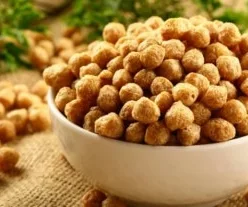Losing belly fat can be a challenging endeavor, but with the right approach, it’s possible to see significant results in as little as two weeks.
This article provides a comprehensive guide on how to tackle belly fat through high-intensity workouts, dietary adjustments, lifestyle changes, and understanding weight loss dynamics. We also address common questions to help you on your journey to a flatter stomach.
Key Takeaways
- Incorporate 3-4 HIIT workouts per week to significantly boost metabolism and target belly fat.
- Eliminate added sugars from your diet to prevent the accumulation of belly fat and related health issues.
- Adopt a low-carb, high-protein diet, and include foods that promote fat-burning, such as green tea and apple cider vinegar.
- Integrate consistent physical activity into your daily routine, manage stress, and ensure adequate sleep for sustainable weight loss.
- Understand that while targeted fat loss is not possible, overall weight loss will also reduce belly fat, and consistency is key to maintaining results.
High-Intensity Interval Training (HIIT) for Rapid Fat Loss

Understanding HIIT and Its Benefits
High-intensity interval Training (HIIT) is a powerful workout strategy that maximizes fat-burning and metabolic health. HIIT aids in weight loss by burning calories quickly and increasing the metabolic rate, making it a highly efficient form of exercise for those short on time. Researchers from Victoria University highlight that HIIT not only benefits you during the workout but also enhances fat metabolism during daily activities.
The benefits of HIIT extend beyond the gym, as it can be done in quick, short bursts without the need for expensive equipment or gym memberships. A study in the British Journal of Sports Medicine emphasizes that HIIT increases fat burning more effectively than traditional aerobic exercise.
Engaging in HIIT can improve burning fat, with larger effects expected for longer training regimens and individuals with overweight/obesity. After just four weeks of HIIT, improvements in fat metabolism are noticeable and continue to progress over time.
Incorporating HIIT into your routine can be simple, with exercises such as mountain climbers, squats, and burpees easily done at home. Each minute of physical activity in a HIIT session can lead to significant fat burn, making it a recommended addition for those struggling with stubborn body fat.
Incorporating HIIT into Your Weekly Routine
Integrating High-Intensity Interval Training (HIIT) into your weekly fitness regimen can significantly enhance fat metabolism and promote rapid belly fat loss. A study in the British Journal of Sports Medicine highlighted that HIIT increases fat burning more than traditional aerobic exercise. This makes it an ideal workout for those with limited time, as HIIT sessions can be short yet highly effective.
To effectively incorporate HIIT into your routine, consistency is key. Aim for at least three sessions per week, ensuring each workout lasts between 20 to 30 minutes. Here’s a simple weekly HIIT schedule to get you started:
- Monday: 20-minute HIIT session
- Wednesday: 20-minute HIIT session
- Friday: 30-minute HIIT session
During your HIIT workouts, focus on exercises that target the whole body for maximum fat burn. Mountain climbers, burpees, and high knees are excellent choices. Remember, the goal is to push your body to its limits in short, intense bursts.
Researchers from Victoria University suggest that even after only four weeks of HIIT, improvements in fat metabolism are noticeable and will continue to improve over time. This is not just during the workouts themselves but also enhances fat burning during other daily activities. To maximize the benefits, combine HIIT with strength training, using bigger weights and fewer reps to challenge your muscles and boost your metabolism further.
Examples of Effective HIIT Workouts for Belly Fat
High-Intensity Interval Training (HIIT) is a powerful tool for achieving rapid weight loss, especially when targeting belly fat. A variety of exercises can be incorporated into a HIIT workout to maximize fat-burning and enhance cardiovascular health.
For those looking to intensify their fitness routine, HIIT offers a dynamic approach to shedding excess weight. It combines bursts of high-intensity activity with periods of rest or lower-intensity exercise, effectively boosting metabolism and targeting belly fat.
Here are some HIIT exercises that are particularly effective for belly fat reduction:
- Mountain climbers
- Jogging on the spot
- Squats
- Jump lunges
- Burpees
- Planking
- Bicycle crunches
- High knees
- Push-ups
- Star jumps
Incorporating these exercises into your routine can lead to significant improvements in fat loss. For instance, after 12 weeks of HIIT, research has shown that each minute of physical activity can burn approximately 0.13 grams of fat. It’s important to note that consistency is key; aiming for 3-4 HIIT sessions per week can help accelerate belly fat loss and promote a healthier body composition.
Dietary Adjustments to Target Belly Fat

The Impact of Added Sugars on Belly Fat
The consumption of added sugars is a significant factor in the accumulation of belly fat. Avoiding products that encourage belly fat deposition, especially simple sugars like fructose-sweetened foods and beverages, is crucial. A high intake of sugar is not only linked to obesity and dental cavities but also to an increase in visceral fat, which is the more dangerous type of fat surrounding your organs.
Reducing added sugars in your diet can lead to a noticeable reduction in belly fat. This includes cutting out processed items such as soft drinks, packaged sauces, and sweets like confectionary, cakes, cookies, and pastries.
Here are some steps to help you reduce your sugar intake:
- Read food labels carefully to identify hidden sugars.
- Opt for natural sweeteners or spices to flavor your food.
- Avoid sugary drinks and choose water or unsweetened beverages instead.
- Prepare meals at home to control the amount of sugar added.
Remember, tackling belly fat is not just about exercise; dietary choices play a pivotal role. By making these adjustments, you can start to see results in as little as two weeks.
Low-Carb and High-Protein Diet Strategies
Adopting a low-carb and high-protein diet can be a powerful strategy for shedding belly fat. This approach focuses on reducing carbohydrate intake, particularly from processed and sugary foods, while increasing the consumption of protein-rich foods. Protein not only helps in maintaining muscle mass during weight loss but also has a higher thermic effect, meaning it burns more calories during digestion compared to fats and carbohydrates.
When structuring your diet, aim for a balance that supports weight loss while providing essential nutrients. Incorporate a variety of protein sources, including both animal and plant-based options, to ensure a comprehensive nutrient profile.
Here are some protein-rich foods to include in your diet:
- Eggs
- Fish and seafood
- Legumes
- Nuts
- Lean meats
- Dairy products
Additionally, integrating fiber-rich foods like legumes, oats, and vegetables can enhance satiety and aid in long-term belly fat reduction. Remember, consistency and a well-rounded diet are key to achieving and maintaining your weight loss goals.
Foods and Ingredients That Help Burn Belly Fat
To effectively target belly fat, incorporating certain foods and ingredients into your diet can be beneficial. A diet rich in whole grains, non-starchy vegetables, and fruits like berries, apples, and pears is essential. Including healthy fats such as olive oil, nuts, and seeds can also promote fat loss. Lean proteins from sources like skinless chicken, eggs, and fatty fish are crucial for maintaining muscle while losing fat.
Foods that are high in soluble fiber, such as beans and legumes, have been shown to reduce belly fat. Additionally, incorporating apple cider vinegar and green tea may boost metabolism and aid in fat burning. It’s important to minimize intake of sugary and processed foods, as well as saturated fats, to prevent an increase in abdominal fat.
Consistent dietary adjustments, along with regular exercise and lifestyle changes, can lead to significant reductions in belly fat.
Here’s a list of belly fat-fighting foods to include in your diet:
- Whole grains
- Non-starchy vegetables
- Fruits (berries, apples, pears, avocados)
- Olive oil
- Beans and legumes
- Nuts and seeds
- Plain yogurt
- Fatty fish (tuna, salmon, mackerel)
- Lean meats (skinless chicken, eggs)
Lifestyle Changes for Sustainable Weight Loss

The Role of Sleep and Stress Management
Managing sleep and stress is a pivotal component in the journey of weight loss, especially for a woman aiming to reduce belly fat. Adequate sleep is essential for regulating hormones that control hunger and appetite, which in turn can influence your metabolism and the body’s ability to burn calories effectively.
- Sleep: Strive for 7-9 hours of quality sleep per night to ensure your body can properly regulate hunger hormones.
- Stress Management: Techniques such as box breathing, yoga, or spending time with loved ones can help reduce cortisol levels, which are linked to abdominal fat storage.
Consistent exercise, coupled with sufficient sleep, naturally guides you towards healthier food choices, which is crucial for maintaining hormonal balance and preventing the accumulation of belly fat.
Incorporating exercises that engage the deep core, such as planks, can be particularly beneficial. Additionally, a simple 20-minute walk after meals can aid in blood glucose regulation and provide a calming effect, further supporting your weight loss goals.
Importance of Hydration and Regular Meals
Maintaining adequate hydration is essential for metabolic processes that contribute to fat loss. Drinking water before meals can act as a natural appetite suppressant, potentially leading to reduced calorie intake. A study highlighted that individuals on a low-calorie diet who drank extra water before meals experienced more weight loss over 12 weeks.
Regular meal timing is also crucial for managing hunger and avoiding the pitfalls of snacking, which can lead to excess calorie consumption. Structured meal plans encourage mindful eating and help in making healthier food choices.
Eating a balanced diet with an emphasis on high-fiber fruits and vegetables, and protein-rich foods, supports sustained energy levels and muscle preservation during weight loss. It’s important to aim for a mix of animal and plant-based proteins to ensure a comprehensive nutrient intake.
Here are some tips for staying hydrated and maintaining regular meals:
- Drink a glass of water 30 minutes before each meal.
- Include protein with every meal and snack.
- Plan your meals to avoid impulsive eating.
- Minimize snacking, but if needed, choose high-fiber, low-calorie options.
Incorporating Physical Activity into Daily Life
Incorporating physical activity into your daily routine is a key strategy for sustainable weight loss and targeting belly fat. Starting with manageable activities and gradually increasing intensity can help prevent injury and ensure long-term adherence. Here are some practical ways to weave exercise into your everyday life:
- Join group fitness classes to add a social element to your workouts.
- Aim for a minimum of 10,000 steps per day to keep active.
- Include both strength and cardio workouts in your weekly schedule.
- Explore various types of workouts to discover what you enjoy most.
- Partner with a friend for mutual accountability and support.
Remember, the goal is to make physical activity a natural and enjoyable part of your day, not a chore. By finding activities that you love, you’re more likely to stick with them and see consistent results.
It’s important to go easy on the exercise when you’re just starting. Begin with shorter, less intense sessions and build up as your fitness improves. This approach helps to create a sustainable habit, reducing the risk of burnout or injury. Keep track of your progress and celebrate the small victories along the way.
Understanding and Overcoming Weight Loss Plateaus

Identifying Causes of Weight Loss Stagnation
When embarking on a journey to lose belly fat, encountering a weight loss plateau can be a challenging hurdle. It’s essential to recognize that these plateaus are a normal part of the weight loss process. Several factors contribute to this stagnation, such as a metabolism slowing down due to reduced body weight, or the difficulty in maintaining a strict diet, leading to occasional lapses.
To effectively overcome a weight loss plateau, it’s crucial to conduct a self-assessment of your dietary and exercise habits. Are there unaccounted for snacks or has your workout intensity decreased? These small deviations can significantly impact your progress.
Understanding the underlying causes is the first step towards resuming your weight loss journey. Here are some common reasons for a plateau:
- A decrease in metabolic rate after initial weight loss
- Inconsistencies in following the diet plan
- Reduced physical activity or workout intensity
- Psychological factors leading to increased caloric intake
By identifying these factors, you can adjust your strategies to break through a plateau and continue on your path to a healthier body.
Strategies to Break Through a Plateau
Hitting a weight loss plateau can be disheartening, but it’s a challenge that many face on their journey to a healthier body. To overcome a plateau, reassessing your current habits is crucial. An honest evaluation of your diet and exercise routines may reveal areas where you’ve become too lenient. It’s not uncommon to underestimate caloric intake or overestimate physical activity, which can halt progress.
Adjusting your approach can reignite weight loss. For instance, increasing workout intensity or altering your calorie intake might be necessary. Remember, consistency is key to pushing past a plateau.
Here are some practical steps to consider:
- Re-evaluate your calorie needs as they may have changed with weight loss.
- Intensify your workouts, possibly by adding more HIIT sessions.
- Ensure adequate hydration, as it’s essential for metabolic processes.
- Track your food and exercise meticulously to identify any discrepancies.
By implementing these strategies, you can break through the plateau and continue on the path to losing belly fat.
Maintaining Motivation and Consistency
Maintaining motivation and consistency is crucial in the journey to lose belly fat. One effective strategy is to keep a detailed food and exercise diary. This not only helps you stay accountable but also provides valuable insights into your energy balance. Here are some steps to ensure you stay on track:
- Review your habits regularly by looking back at your diary. Are you adhering to your diet and exercise plan, or have you started to bend the rules?
- Set realistic and achievable goals to keep yourself motivated. Celebrate small victories to maintain a positive mindset.
- Incorporate variety in your workouts to prevent boredom and keep your body challenged.
- Connect with a support group or a buddy who shares your weight loss goals. This can provide encouragement and accountability.
Remember, overcoming a weight loss plateau is part of the process. Assess your habits and make necessary adjustments to continue progressing towards your goal.
It’s also important to recognize the role of external factors in your weight loss journey. As suggested by HelpGuide.org, simple actions like going for a walk or stretching can boost your energy and motivation. Lack of time should not be a barrier to incorporating physical activity into your routine.
Frequently Asked Questions About Losing Belly Fat

Can I Lose Tummy Fat Fast?
The quest to lose tummy fat quickly is common, but it’s important to set realistic expectations. Rapid fat loss, especially in the belly area, is not typically sustainable or healthy. Instead, a combination of consistent exercise, dietary changes, and lifestyle adjustments is recommended for long-term results.
- High-Intensity Interval Training (HIIT): Incorporate HIIT workouts to boost metabolism and burn fat efficiently.
- Dietary Choices: Avoid added sugars and opt for a balanced diet rich in protein and low in carbohydrates.
- Lifestyle Tweaks: Ensure adequate sleep, manage stress, and stay hydrated to support weight loss.
While it’s tempting to seek quick fixes, gradual changes are more likely to lead to permanent belly fat loss. Patience and persistence are key, as the body needs time to respond to healthier habits.
Remember, losing belly fat is a gradual and holistic process. It’s not just about the exercises you do or the food you eat; it’s also about how you live your day-to-day life. Stay motivated and consistent, and the results will follow.
How to Lose Lower Belly Fat Effectively
A combination of diet, exercise, and lifestyle adjustments is essential to effectively lose belly fat, especially in the lower abdomen. While it’s impossible to target fat loss in one specific area, reducing overall body fat will also diminish lower belly fat. Incorporating HIIT workouts can accelerate fat burning, as these sessions increase metabolism and target visceral fat.
Consistent HIIT routines, coupled with dietary changes, can lead to significant reductions in belly fat. Avoiding added sugars and opting for a diet rich in proteins, fibers, and healthy fats is crucial. Foods like green tea and apple cider vinegar may also contribute to a flatter abdomen.
Here are some steps to consider:
- Perform HIIT workouts 3-4 times a week.
- Reduce carbohydrate intake and increase protein and fiber.
- Include gut-friendly foods in your diet.
- Limit consumption of added sugars.
Understanding that there’s no quick fix for losing lower belly fat is important. Patience and persistence, along with these strategies, will yield results over time.
Top Foods That Accelerate Lose belly fat
In the quest to lose belly fat, certain foods can give you an edge in burning calories and trimming the waistline. Incorporating specific foods into your diet can significantly enhance fat-burning efforts. Here’s a list of foods known for their ability to help reduce belly fat:
- Fatty fish like salmon and mackerel are high in omega-3 fatty acids, which have been shown to reduce visceral fat.
- MCT oil and coconut oil contain medium-chain triglycerides, which can increase metabolism.
- Coffee and green tea are rich in caffeine and catechins, respectively, both of which can boost metabolism.
- Eggs are a great source of high-quality protein, which is essential for fat loss.
- Apple cider vinegar can help in weight management and blood sugar control.
- Chili peppers contain capsaicin, which has a thermogenic effect, increasing calorie burn.
While no single food can target belly fat, a combination of these foods along with a healthy diet and exercise can lead to significant results.
Remember, consistency is key, and making these foods a regular part of your diet, along with other healthy habits, can lead to sustained weight loss and a reduction in belly fat.
Conclusion
Embarking on a two-week journey to reduce belly fat can be a challenging yet rewarding endeavor. By incorporating HIIT workouts, cutting out added sugars, and embracing a diet rich in proteins, fibers, and healthy fats, you can set the stage for a healthier, trimmer you. Remember, while targeted exercises and dietary changes can lead to quick results, maintaining a consistent, balanced lifestyle is key to long-term success. Stay motivated, be patient with your body, and don’t hesitate to seek professional advice if needed. With determination and the right approach, you can achieve your fitness goals and enjoy the benefits of a healthier lifestyle.
Frequently Asked Questions About Losing Belly Fat
Can I lose belly fat in just two weeks?
While significant weight loss in a short period can be challenging, incorporating high-intensity interval training (HIIT), reducing added sugars, and making dietary adjustments can help jump-start the process of losing belly fat.
What are HIIT workouts and how do they help with belly fat?
HIIT workouts involve short bursts of intense exercise followed by rest periods. They can help burn calories and fat more efficiently, potentially aiding in the reduction of belly fat when included as part of a regular exercise routine.
How does reducing added sugars impact belly fat?
Added sugars contribute to excess calorie intake and can lead to weight gain, particularly around the midsection. Cutting out added sugars from your diet can help reduce belly fat and improve overall health.
Are there specific foods that can help Lose belly fat?
Certain foods, such as those high in protein and fiber, can support weight loss and fat burning. Including foods like green tea, apple cider vinegar, and healthy fats in your diet may also contribute to a reduction in belly fat.
What lifestyle changes are important for sustainable weight loss?
Sustainable weight loss involves a combination of regular physical activity, proper hydration, stress management, and sufficient sleep. These lifestyle changes can help maintain a healthy weight and reduce belly fat over time.
How can I overcome a weight loss plateau when trying to lose belly fat?
To overcome a weight loss plateau, it’s important to reassess your diet and exercise routine, potentially increasing the intensity or variety of workouts and ensuring your diet is balanced and nutritious. Staying motivated and consistent is key to breaking through a plateau.





